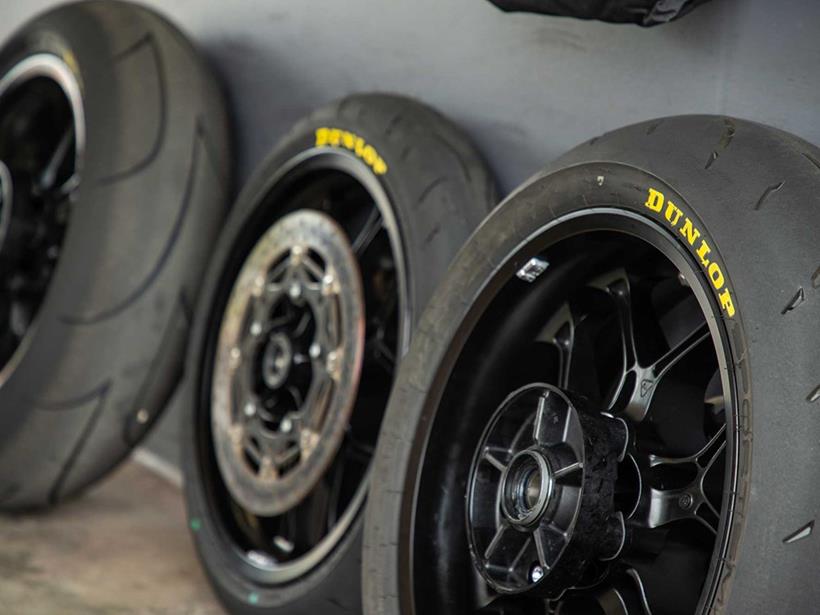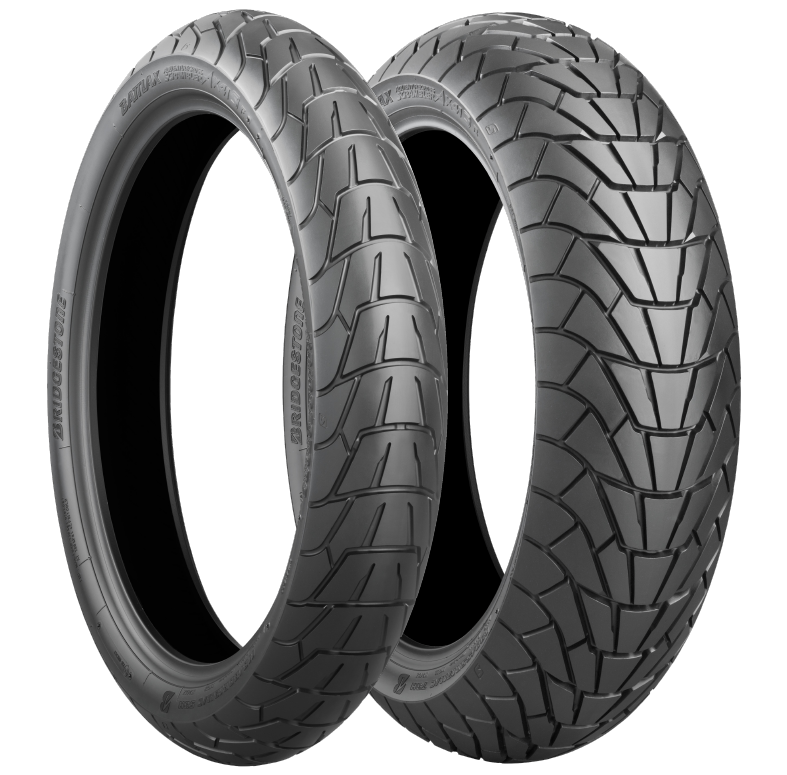Everything about the Necessary Motorcycle Tyre Guide for Optimum Bike Upkeep and Efficiency
The Necessary Motorbike Tyre Guide works as an essential source for cyclists seeking to boost their bike's efficiency and security. motorcycle tyre guide. It supplies insights into different tire types and specifications that influence taking care of and durability. Furthermore, comprehending proper upkeep techniques can greatly prolong tyre life. Nonetheless, many cyclists forget critical elements that influence their riding experience. Discovering these elements can bring about informed decisions that eventually improve both safety and security and enjoyment when traveling
Understanding Motorbike Tire Types
When picking bike tires, comprehending the numerous kinds readily available is essential for peak performance and safety. Motorcyclists encounter various tyre classifications, each created for specific riding conditions and styles. Sporting activity tires stress grasp and responsiveness, making them ideal for high-performance bikes and track use. Touring tyres, on the other hand, concentrate on toughness and convenience, perfect for long-distance adventures. Off-road tires include aggressive tread patterns, giving grip on irregular surface areas, while dual-sport tires use versatility for cyclists who change between on-road and off-road conditions.Additionally, cruiser tyres are designed for stability and a smooth ride, satisfying the distinct demands of cruisers and exploring bikes. Understanding these categories enables motorcyclists to choose tyres that straighten with their riding behaviors and ecological conditions, ultimately improving both safety and security and performance. Each type plays an essential role in making sure a remarkable riding experience tailored to the individual motorcyclist's demands.
Trick Tyre Specs Described
Selecting the ideal motorbike tyres involves greater than just understanding the different types; it additionally calls for experience with crucial specs that affect performance and safety. Key specs include tyre size, which is usually expressed as a collection of numbers indicating size, aspect proportion, and edge size. This code is vital for guaranteeing compatibility with the motorcycle.Another crucial specification is the lots index, indicating the maximum weight a tire can sustain. The rate score represents the optimal speed a tire can safely manage, essential for performance enthusiasts.Additionally, tread pattern and rubber substance affect grip, stability, and wear characteristics. Tires with a softer substance have a tendency to offer much better grasp however wear quicker, while harder compounds last much longer yet may compromise traction. Understanding these requirements permits riders to make educated decisions, improving both their safety and security and riding experience.
How to Pick the Right Tyres for Your Bike
Exactly how can a cyclist guarantee they select the appropriate tires for their bike? Selecting the suitable tires entails understanding the particular requirements based on riding weather condition, terrain, and design problems. Cyclists should first seek advice from the motorbike's manual to recognize advised tyre sizes and specifications.Next, they should examine the kind of riding they intend to do-- whether it's commuting, visiting, or off-road. Each classification has distinctive tire styles tailored for top performance.Additionally, bikers need to examine tread patterns; deeper treads offer much better hold in wet problems, while shallower treads improve stability on completely dry surfaces.Lastly, it is necessary to examine the tyre's construction and product, as these elements influence durability and handling (motorcycle tyre guide). By evaluating these elements very carefully, a cyclist can with confidence choose tires that improve safety and security, efficiency, and overall riding experience
The Value of Tyre Pressure and Upkeep
Tyre stress is a substantial facet of motorbike upkeep that directly affects safety and performance. Preserving the appropriate tyre stress warranties optimal contact with the roadway, boosting grasp and security during experiences. Under-inflated tyres can cause increased rolling resistance, causing inadequate gas effectiveness and unnecessary wear on the tires. On the other hand, over-inflated tires might minimize and cause an extreme adventure grip, specifically in damp conditions.Regularly checking tire stress, ideally prior to each experience, is necessary to maintaining the motorcycle's general performance. Motorcyclists should describe the producer's specifications for the suggested pressure degrees. In addition, checking tyre condition and changing stress according to tons and riding conditions is essential for safety and security. Proper tire maintenance adds to expanded tire life expectancy, better handling, and boosted stopping efficiency. Eventually, regular interest to tyre stress and upkeep is critical for assuring a enjoyable and safe riding experience.

Acknowledging Signs of Tyre Use and Damages
Recognizing indications of tire wear and damages is necessary for keeping bike safety and performance. Key indications include assessing step deepness and conducting a complete aesthetic evaluation for any type of visible damage. Resolving these elements immediately can stop more complications when traveling.
Step Depth Assessment
As riders take to the roads, the value of reviewing step depth can not be overstated, since worn or damaged tires can considerably impact safety and efficiency. Walk deepness directly affects grip, stopping distance, and cornering stability. To assess walk deepness, bikers need to use a walk depth scale, gauging the grooves at numerous factors across the tire. A deepness of 2mm or much less indicates substantial wear and requires prompt replacement. Furthermore, cyclists can employ the "dime examination" by putting a coin into the tread; if the top of Lincoln's head is visible, the tire is also put on. Normal checks assure peak click to investigate hold on diverse roadway problems, advertising a safer riding experience while boosting the general handling of the motorbike.
Aesthetic Damage Inspection
Evaluating motorbike tyres for visual damage is essential for keeping safety and security on the road. Cyclists ought to frequently examine tyres for signs of wear such as cracks, protrudes, or slits. Irregular wear patterns may indicate alignment problems or incorrect inflation, causing compromised efficiency. Furthermore, looking for international things embedded in the step can prevent prospective blowouts. Bikers need to pay close interest to the sidewalls, as any kind of cuts or abrasions can weaken the tyre's framework. Ensuring that the walk is cost-free from excessive wear is important for excellent grasp. Normal visual assessments not just boost security however also extend the life of the tires, guaranteeing a smoother and more trustworthy riding experience. Timely discovery of damage can avoid expensive repairs and crashes.
Seasonal Tire Considerations for Various Riding Problems
When considering motorcycle tires, seasonal conditions play a vital duty in efficiency. In wet weather condition, tires developed for enhanced hold and water variation end up being necessary for safety and security. Furthermore, winter season riding requires certain tire attributes to assure peak traction on cold, potentially icy surfaces.

Wet Weather Efficiency
Damp climate condition present distinct challenges for motorcyclists, making the choice of tyres crucial for visit this page safety and performance. Tyres developed for damp weather usually include much deeper treads and specialized rubber compounds that enhance grasp on slippery surface areas. These tyres are engineered to direct water away, minimizing the risk of aquaplaning and enhancing security throughout rain. Cyclists ought to think about tires with a well balanced style, providing both traction and sturdiness in damp conditions. Furthermore, preserving proper tire stress is crucial, as under-inflated tires can compromise efficiency. When faced with rain-soaked roadways, normal evaluations for wear and damages are essential to ensure peak feature. Selecting suitable wet-weather tires ultimately adds to a more secure and a lot more enjoyable riding experience.
Winter Season Tyre Demands
Riding in wintertime conditions postures distinct obstacles that necessitate specific tyre requirements to ensure security and efficiency. Winter season motorbike tires are created with much deeper footsteps and softer rubber substances, offering enhanced grasp on chilly and slippery surface areas. This is vital for preserving grip on ice, snow, and wet roads. In addition, wintertime tyres frequently include an one-of-a-kind walk pattern that aids channel water away, decreasing the danger of aquaplaning. Riders ought to likewise take into consideration the tyre's temperature strength, as efficiency can reduce in extreme cold. It is very important to regularly examine tire stress, as it can go down substantially in lower temperatures. By selecting the proper wintertime tires, motorcyclists can navigate harsh conditions with greater self-confidence and security, ensuring a much safer riding experience.
Tips for Correct Tire Storage and Durability
Appropriate tire storage is vital for keeping their durability and performance gradually, as overlooking this aspect can cause premature deterioration. To assure ideal storage space, it is necessary to keep tyres in a great, completely dry environment away from direct sunshine and sources of warm, such as radiators or heaters. Extreme heat can trigger rubber substances to damage down, compromising the tire's integrity.Additionally, tyres must be stored upright or stacked flat, depending on their kind. If piled, it is suggested to rotate them periodically to prevent flat places. Appropriate rising cost of living is likewise important; tyres ought to be pumped up to the supplier's recommended pressure to stay clear of deformation.Lastly, it is useful to cover tires with a safety material to protect them from dirt and impurities. Following these pointers will help prolong the life of motorbike tires, guaranteeing they continue to be efficient and safe for use when the riding period resumes.
Regularly Asked Inquiries
Exactly how Frequently Should I Change My Motorcycle Tyres?

Can I Mix Different Tire Brands on My Motorbike?
Mixing various tire brands on a motorbike is generally not recommended. Variations in walk patterns, rubber substances, and performance attributes can bring about unforeseeable handling and jeopardized safety and security, possibly boosting the threat of crashes.
What Is the Life-span of a Motorcycle Tyre?
The life expectancy of a motorbike tire commonly varies from 5,000 to 15,000 miles, influenced by factors such as riding surface, tyre, and style upkeep. Normal evaluations can help assure peak efficiency and security throughout their use.
Just how Do I Deal With Old Bike Tyres?
When dealing with old bike tires, they ought to be taken to assigned recycling centers. Many local waste administration services likewise offer tyre disposal programs, making sure environmentally pleasant handling and compliance with neighborhood laws concerning tire waste.
Are There Any Kind Of Tire Service Warranties Offered for Motorbikes?
Numerous motorcycle tire makers provide guarantees that cover issues in product and handiwork. The specifics vary by brand and model, so it's essential for cyclists to review private guarantee terms before buying new tires. Off-road tires include hostile step patterns, providing grip on unequal surfaces, while dual-sport tyres use versatility for motorcyclists who move in between off-road and on-road conditions.Additionally, cruiser tyres are developed for stability and a smooth adventure, catering to the special demands of cruisers and touring bikes. Each category has distinct tyre styles tailored for top performance.Additionally, motorcyclists need to analyze step patterns; deeper treads supply far better grasp in damp problems, while shallower footsteps improve security on completely dry surfaces.Lastly, it is essential to check out the tire's construction and product, as these aspects affect longevity and handling. Appropriate tyre upkeep contributes to extended tyre life-span, better handling, and enhanced braking performance. Appropriate inflation is also essential; tires should be inflated to the producer's suggested stress to prevent deformation.Lastly, it is valuable to cover tires with a safety product to protect them from dirt and contaminants. The lifespan of a motorcycle tyre commonly ranges from 5,000 to 15,000 miles, influenced by factors such as riding surface, style, and tire upkeep.